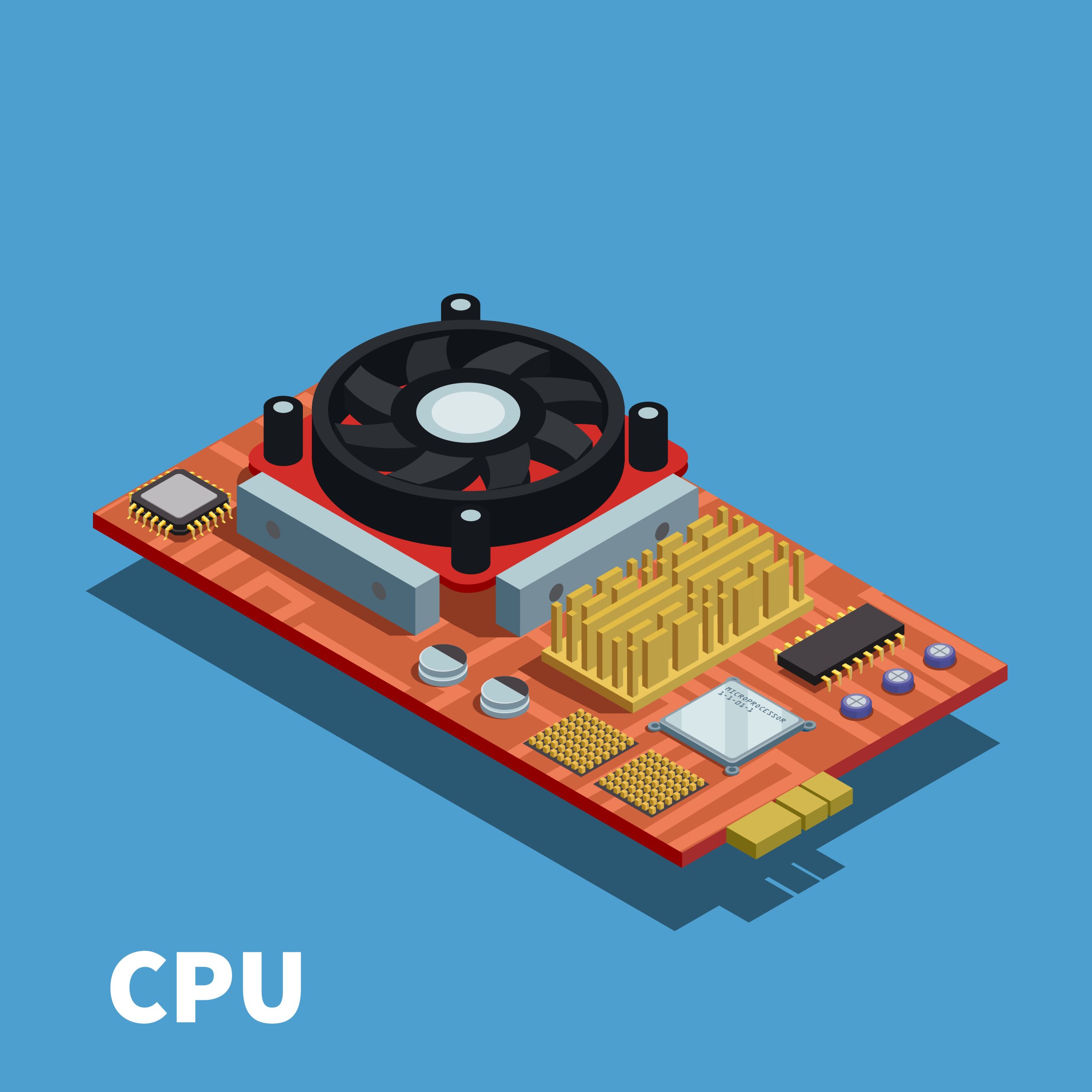
In the swiftly evolving realm of technology, where the paramount goals are energy conservation and peak performance, comprehending the intricacies of GPU fan rotation takes center stage. “GPU Fans Might Not Need to Spin” Let’s navigate through the verities of GPU fans rotation, unraveling its profound implications on energy preservation and overall prowess.
Table of Contents
In the digital epoch, prioritizing energy efficiency becomes imperative, especially concerning electronic apparatus. GPUs (Graphics Processing Units) play a pivotal role across diverse applications, from gaming to professional graphics endeavors. The rotation of GPU fans, often relegated to obscurity, emerges as a pivotal factor dictating the delicate balance between energy efficiency and performance.
Decoding GPU Fan Mechanisms
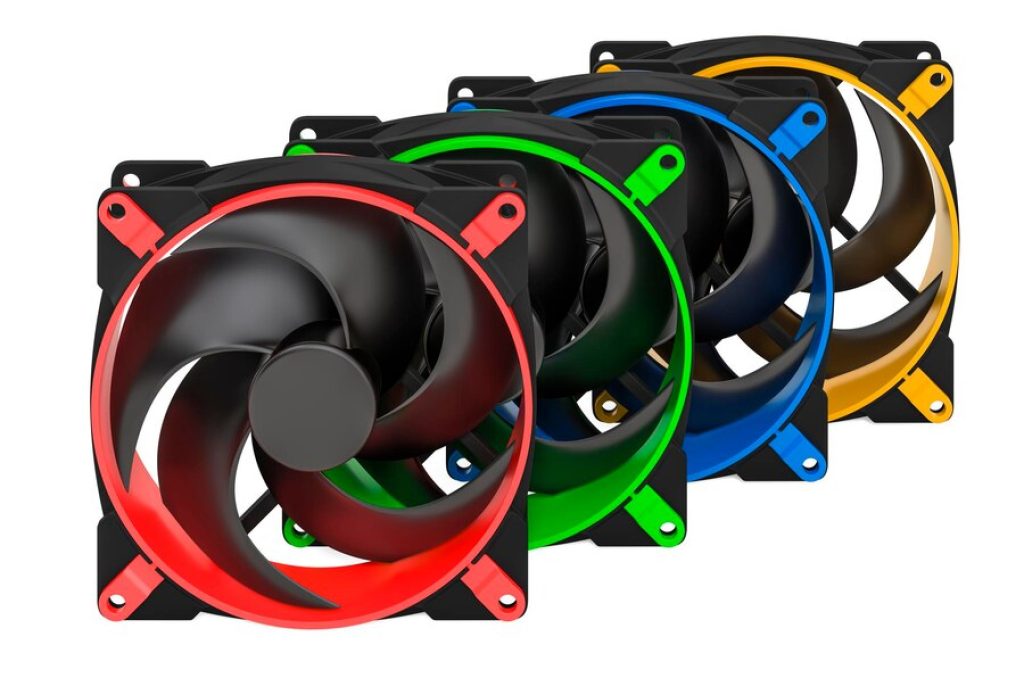
Why Your GPU Fans Might Not Need to Spin
GPU fans transcend mere adornments; they represent integral components meticulously designed to maintain the GPU at an optimal temperature. Their primary duty involves dissipating heat generated during computationally intense tasks, averting overheating and potential hardware compromise.
How about we dive further into the complexities of GPU (Designs Handling Unit) fan instruments:
GPU Fans Might Not Need to Spin

Why Your GPU Fans Might Not Need to Spin
Motivation behind GPU Fans:
- GPU fans are fundamental parts intended to direct the temperature of the illustrations card.
- They disperse heat produced by the GPU during serious undertakings like gaming or delivering.
Pivotal versus Divergent Fans:
- Axial or centrifugal GPU fans are options.
- Pivotal fans get air through the designs card lined up with the fan hub, while radial fans attract air opposite to the fan hub. The decision is based on the design of the card and its cooling requirements.
Fan Control Advances:
- PWM (Heartbeat Width Balance) and voltage control are normal innovations directing fan speed.
- Voltage control alters the power supplied to the fan, whereas PWM alters the fan speed by varying the electrical signal’s pulse width.
Temperature Sensors:
- Temperature sensors on the GPU screen the designs card’s intensity levels.
- The GPU changes the fan speed in view of temperature readings to keep up with ideal working circumstances.
Fan Profiles:
- GPU producers carry out predefined fan profiles or permit clients to make custom profiles.
- The fan speed that responds to temperature “GPU Fans Might Not Need to Spin” changes is controlled by these profiles to achieve a balance between noise levels and cooling performance.
Zero RPM Mode:
- Some GPUs include a Zero RPM mode where the fan stays off during low-request situations.
- The fan only turns on when the GPU’s temperature rises above a predetermined threshold, reducing noise when not in use.
Configurations with three or two fans:
- Top of the line GPUs frequently utilize different fans organized in double or triple arrangements.
- By distributing airflow over a larger surface area, this arrangement improves cooling efficiency.
Fan Bearing Sorts:
- Bearings like sleeve, ball, and fluid dynamic bearings are used in fans.
- The performance, noise level, and longevity of the fan are all influenced by the bearing type.
Maintenance and the Dust:
- Collected dust on fan sharp edges and heatsinks can obstruct wind current, prompting expanded temperatures.
- Normal cleaning is critical to forestall execution debasement and keep up with ideal cooling effectiveness.
Acoustic Factors to Consider:
- Fan clamor is a basic variable for some clients.
- Producers intend to offset cooling execution with commotion levels, and secondary selling arrangements might give calmer other options.
Overclocking Effect:
- Overclocking can expand GPU heat yield.
- Clients participated in overclocking might “GPU Fans Might Not Need to Spin” have to change fan settings or consider extra cooling answers for keep up with stable temperatures.
Understanding these parts of GPU fan instruments enables clients to upgrade cooling execution, oversee clamor levels, and broaden the life expectancy of their illustrations cards.
Energy Efficiency Unveiled
The energy outlay of a GPU stands in direct sway to the velocity and effectiveness of its fans. Striking a judicious equilibrium between effective cooling and minimal energy consumption becomes paramount. We shall probe into the nexus between fan rotation and energy efficiency, providing insights into its ramifications on power utilization.
Investigating the domain of GPU energy productivity includes understanding how designs handling units oversee power utilization while conveying ideal execution. Here is an outline:
GPU Fans Might Not Need to Spin
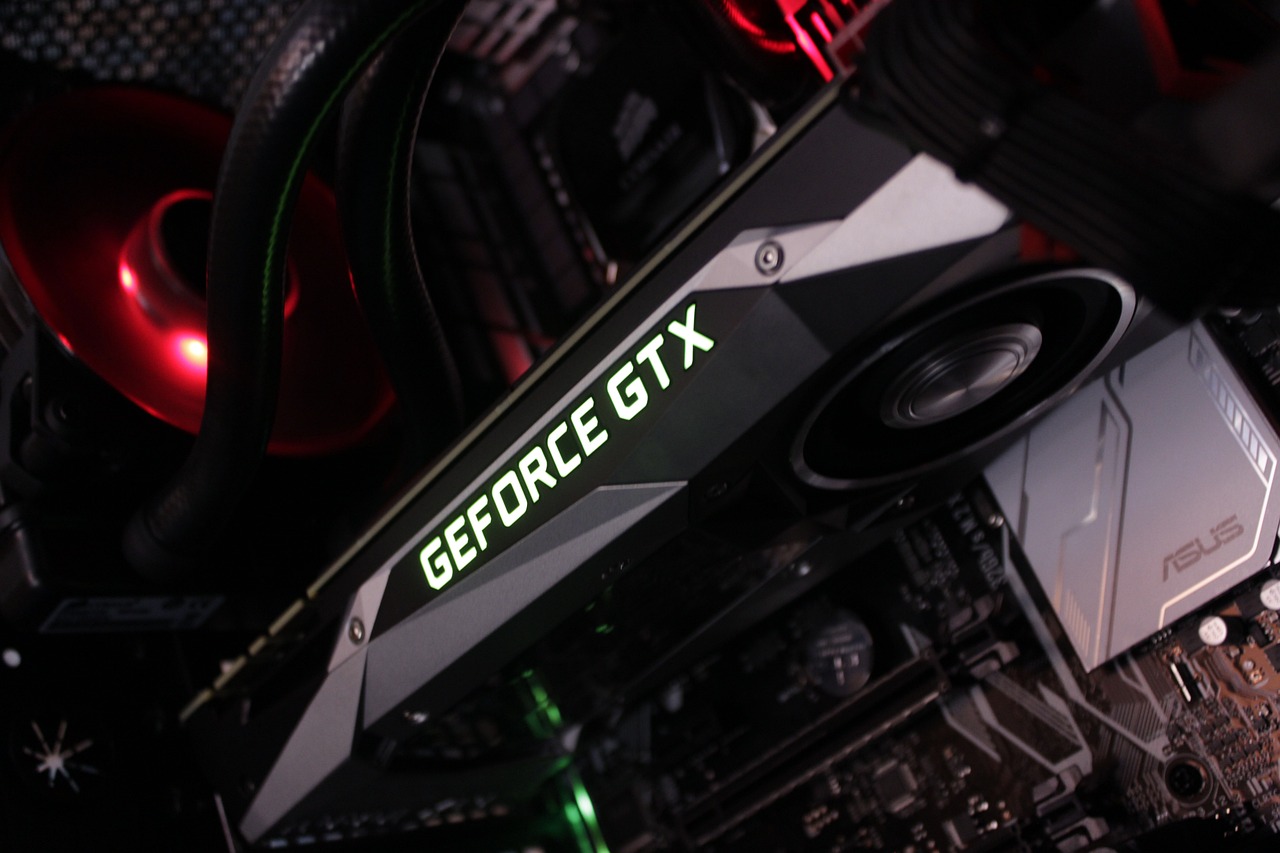
Why Your GPU Fans Might Not Need to Spin
Power The board Strategies:
- Voltage and Frequency Scaling Dynamic (DVFS): GPUs change their voltage and clock recurrence powerfully founded on responsibility. This helps balance execution and power utilization, with lower values during inactive states and higher qualities during requesting assignments.
- Clock Gating: In order to conserve power when not in use, portions of the GPU that are not being utilized can be temporarily gated.
The Manufacturing Method:
- More modest semiconductor producing processes add to energy effectiveness. GPUs made with cutting-edge fabrication techniques (such as 7nm or smaller) typically use less power and perform better.
Energy-Efficient Buildings:
- GPU models assume an essential part. More current structures frequently accompany upgrades in power productivity, presenting highlights that improve execution per watt.
Equal Handling and CUDA Centers:
- GPUs succeed at equal handling. CUDA centers, which are basic handling units in NVIDIA GPUs, permit synchronous execution of numerous undertakings. This parallelism improves execution without a direct expansion in power utilization.
Heterogeneous Framework Engineering (HSA):
- HSA permits different handling units (computer processor, GPU, and so on.) to collaborate seamlessly, maximizing power consumption and task distribution for increased efficiency.
States of power:
- GPUs have different power states going from inactive to dynamic. During times of low activity, power consumption can be reduced by efficiently transitioning between these states.
Dynamic Burden Adjusting:
- The workload is dynamically distributed among the available cores by GPUs. This heap adjusting guarantees that power is distributed productively across the GPU for ideal execution.
Optimizing the Driver:
- Illustrations card drivers assume a part in energy effectiveness. Standard updates from GPU producers frequently incorporate improvements that upgrade execution and diminish power utilization.
Memory Effectiveness:
- Effective utilization of memory is essential for energy proficiency. Advancements like High Transmission capacity Memory (HBM) or GDDR6X offer better information move rates with lower power utilization.
Task-Explicit Equipment Speed increase:
- Some GPUs incorporate devoted equipment for explicit assignments, similar to video encoding or computer based “GPU Fans Might Not Need to Spin” intelligence calculations. These particular units can play out these errands more proficiently than universally useful centers, diminishing generally speaking power utilization.
Calibrated Power Cutoff points:
GPU Fans Might Not Need to Spin

- Clients can frequently change power limits on their GPUs through programming apparatuses. This takes into account customization in view of execution needs and energy productivity needs.
Outside Elements:
- Energy efficiency is also influenced by external factors like the temperature outside. Cooler conditions for the most part work with more productive activity.
Users are able to make well-informed decisions based on their specific computing requirements when they are aware of these “GPU Fans Might Not Need to Spin” aspects of GPU energy efficiency, such as prioritizing performance over energy conservation or finding a balance between the two.
Performance Surge through Prudent Fan Rotation
Astoundingly, the synergy between GPU fan rotation and performance becomes apparent. When fans operate optimally, the GPU achieves temperature constancy, culminating in augmented performance. Instances from the tangible realm underscore tangible performance enhancements derived from meticulous adjustment of fan parameters.
Accomplishing a presentation flood through judicious fan pivot includes improving the revolution speed and conduct of the cooling fans on a framework, especially those related with parts like the computer chip or GPU. A look at how this can be done is as follows:
GPU Fans Might Not Need to Spin
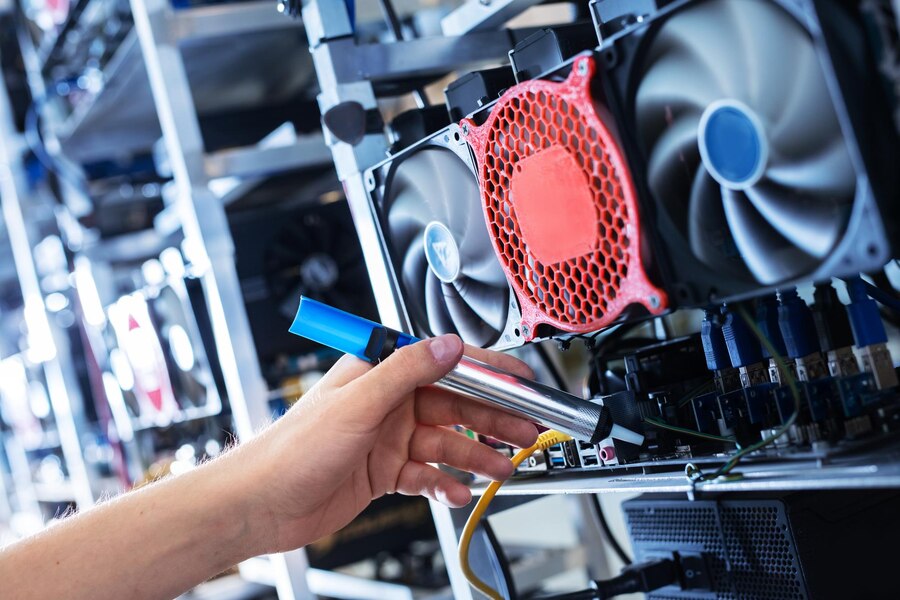
Why Your GPU Fans Might Not Need to Spin
Dynamic Fan Speed Control:
- Carrying out unique fan speed control permits the framework to change the revolution speed of cooling fans in light of the temperature of basic parts.
- Judicious pivot includes finding some kind of harmony between holding temperatures in line and limiting superfluous clamor.
Savvy Fan Bends:
- Making smart fan bends, or profiles, guarantees that fan speed is corresponding to the temperature. This implies fans turn quicker as temperatures climb and dial back during times of lower interest.
- Adaptable fan bends empower clients to fit the cooling conduct to their particular inclinations and execution prerequisites.
Temperature Observing:
- Using temperature checking devices helps track the presentation of basic parts progressively.
- By remaining informed about temperature variances, clients can change fan settings to keep an ideal harmony among cooling and clamor.
Zero RPM or Low RPM Modes:
- A few frameworks and parts offer zero RPM or low RPM modes during inactive or low-request circumstances.
- Empowering these modes permits fans to stop or turn at negligible rates when not required, adding to a calmer and more energy-proficient framework.
Manual Fan Control:
- High level clients might favor manual fan control to adjust the turn speed in view of their particular responsibility and execution objectives.
- This active methodology empowers customization however requires cautious observing to forestall overheating.
Execution Profiles:
- Current frameworks frequently accompany predefined execution profiles that change different settings, including fan revolution, in view of the client’s inclination.
- Optimizing fan behavior without making a lot of manual adjustments can be accomplished by selecting the right performance profile.
Adjusting Commotion and Execution:
- Finding some kind of harmony between commotion levels and execution is urgent. While higher fan velocities can improve cooling, they likewise add to expanded clamor.
- Clients ought to consider their capacity to bear clamor and the requests of their registering errands while arranging fan pivot.
Normal Framework Upkeep:
- Dust gathering can hinder wind current and diminish the adequacy of cooling fans. Consistently cleaning the fans and intensity sinks guarantees ideal execution over the long haul.
Solutions for Specialized Cooling:
- A few frameworks utilize particular cooling arrangements, for example, fluid cooling or high level intensity pipe plans, to improve cooling productivity without depending exclusively on fan revolution speed.
Continuous Changes:
- Frameworks that permit ongoing acclimations to fan settings empower clients to answer rapidly to changing jobs or natural circumstances.
Why Your GPU Fans Might Not Need to Spin
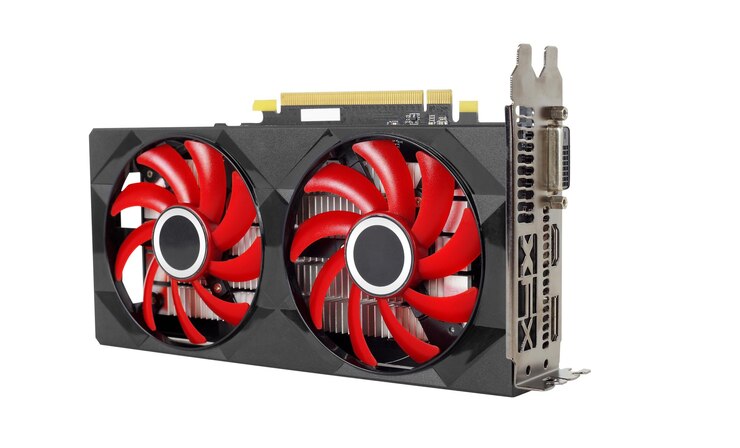
Why Your GPU Fans Might Not Need to Spin
By embracing a reasonable way to deal with fan pivot, clients can open an exhibition flood by enhancing cooling productivity, guaranteeing framework dependability, and fitting the commotion levels to their inclinations.
Dispelling Notions
Dispelling fallacies becomes imperative to grasp the verities of GPU fan rotation. Common misconceptions surrounding accelerated rotation causing wear and tear or the belief in reduced rotation conserving energy demand clarification to dispense accurate information.
Optimization of GPU Fan Configuration
Unleash the full potential of your GPU by mastering the finesse of fan optimization. Practical recommendations on tweaking fan parameters “GPU Fans Might Not Need to Spin” and the introduction of software tools that streamline this process empower users to strike an ideal equilibrium between energy thrift and heightened performance.
Upgrading GPU fan setup is vital for keeping up with the right harmony between cooling effectiveness and commotion levels. This is an aide while heading to accomplish a successful GPU fan arrangement:
GPU Fans Might Not Need to Spin
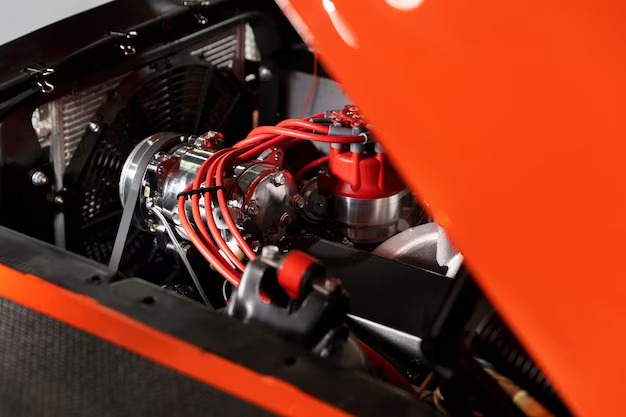
Why Your GPU Fans Might Not Need to Spin
Figuring out GPU Fans:
- Know the design and characteristics of the axial or centrifugal fans that your GPU uses.
Update Designs Drivers:
- Make certain that your graphics drivers are current. Producers frequently discharge driver refreshes that incorporate advancements and upgrades for fan control.
Fan Bend Change:
- Most GPUs permit clients to change the fan bend, which decides how the fan speed answers changes in temperature.
- Redo the fan bend to meet your cooling needs while holding commotion levels under control. Under heavy loads, a curve that is more aggressive may provide better cooling.
Zero RPM Mode:
- On the off chance that your GPU upholds it, think about empowering Zero RPM mode during inactive or low-load circumstances. This component stops the fan totally when the GPU isn’t creating a lot of intensity, lessening commotion.
Configurations with three or two fans:
- Superior execution GPUs frequently accompany double or triple fan designs. Comprehend how these fans cooperate and change their settings likewise to advance wind current and cooling.
Case Ventilation:
- Guarantee that your PC case has legitimate wind stream. Great case ventilation helps the GPU fans work all the more proficiently by giving a consistent stock of cool air.
Temperature Observing:
- Use checking devices to watch out for GPU temperatures. This data is fundamental for changing fan settings and guaranteeing your GPU works inside safe temperature ranges.
Personalized Fan Profiles:
- Some GPUs take into account custom fan profiles. Try different things with various profiles to track down the ideal harmony among cooling and clamor for your particular use situation.
Outside Elements:
- Consider the natural circumstances where your PC is found. To maintain optimal GPU temperatures, warmer ambient temperatures may necessitate more aggressive fan settings.
Normal Cleaning:
Dust amassing on the GPU and its fans can decrease cooling proficiency. Routinely spotless the GPU and encompassing parts to forestall overheating.
Undervolting:
- Undervolting the GPU may enable lower fan speeds while maintaining performance by lowering power consumption and heat output.
Reseller’s exchange Cooling Arrangements:
- Aftermarket GPU coolers and liquid cooling options are options for users looking for improved cooling performance. With lower noise levels, these may provide better temperature control.
Stress Testing:
Use tools for stress testing to see how well your fan configuration works under heavy loads. Guarantee that the GPU stays inside safe temperature limits during broadened use.
Preferences for Users:
- Consider your capacity to bear fan commotion. A few clients focus on calmer activity over most extreme cooling, while others might incline”GPU Fans Might Not Need to Spin” toward more forceful cooling regardless of whether it implies somewhat higher commotion levels.
- Via cautiously upgrading your GPU fan arrangement, you can guarantee that your designs card works productively, keeps up with safe temperatures, and meets your presentation assumptions without creating extreme commotion.
Why Your GPU Fans Might Not Need to Spin
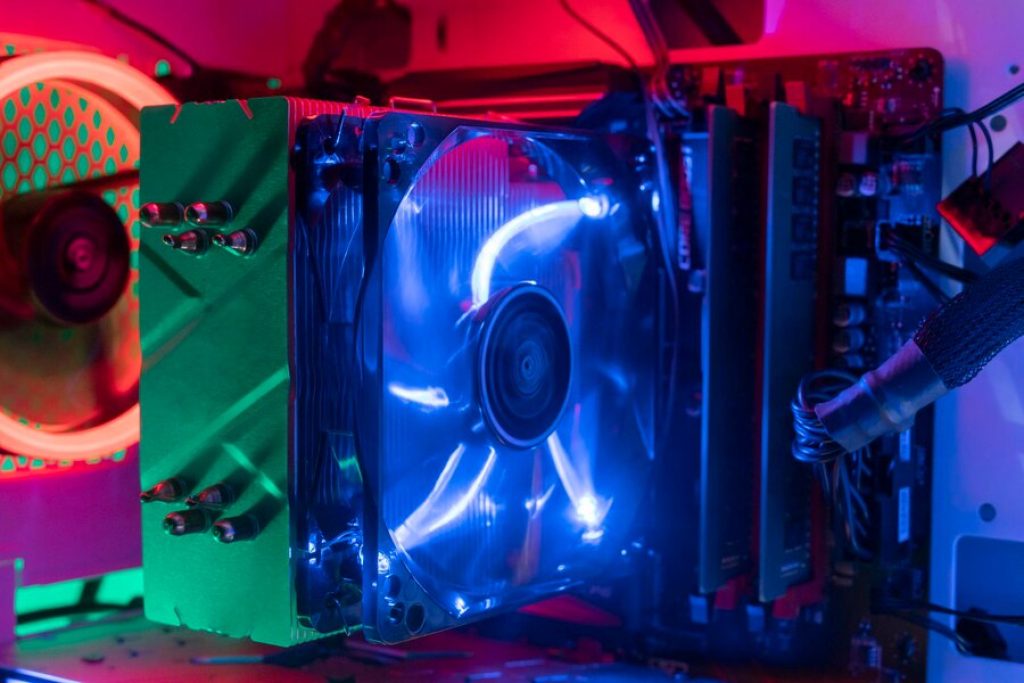
Why Your GPU Fans Might Not Need to Spin
Influence on Gaming Realm
For avid gamers, the GPU stands as the epicenter of their gaming odyssey. We shall probe into how GPU fan rotation distinctly influences “GPU Fans Might Not Need to Spin” gaming performance, providing insights into finding the optimal equilibrium maximizing both energy efficiency and gaming euphoria.
The GPU (Illustrations Handling Unit) assumes a urgent part in the gaming domain, impacting different parts of gaming execution, visual loyalty, and generally client experience. Here is an investigation of the huge manners by which GPUs influence the gaming scene:
GPU Fans Might Not Need to Spin
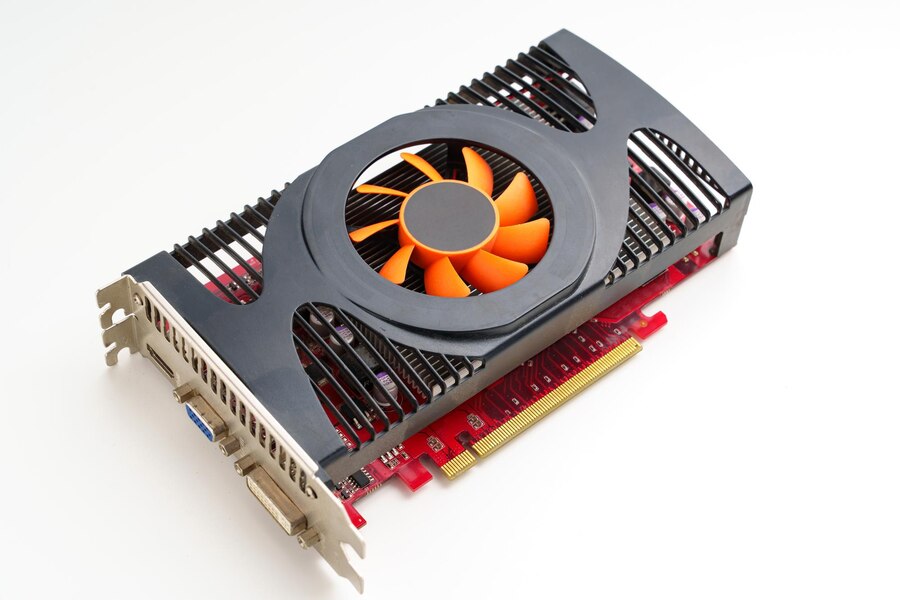
Why Your GPU Fans Might Not Need to Spin
Designs Delivering:
- The essential capability of a GPU is delivering designs. It contributes to games’ overall visual quality by rendering images, textures, and visual effects in real time.
Outline Rate and Smooth Ongoing interaction:
- High frame rates can only be achieved with a powerful GPU. A more immersive and responsive gaming experience is provided by higher frame rates, which result in smoother gameplay.
Goal and Detail:
- Current GPUs permit gamers to play at higher goals, for example, 1440p or 4K, giving more honed and more point by point visuals. The GPU’s delivering capacity straightforwardly impacts the degree of detail that can be shown on the screen.
Beam Following and Practical Lighting:
- High level GPUs support beam following innovation, recreating practical lighting, reflections, and shadows. This upgrades the visual authenticity of games, establishing more vivid conditions.
VR (Computer generated Reality) Execution:
- VR gaming necessitates powerful graphics processing units for a responsive and smooth experience. The GPU is answerable for delivering separate pictures for each eye and keeping up with high edge rates to forestall movement ailment.
Surface Quality and Sifting:
- GPUs handle the stacking and delivering of surfaces, impacting the generally visual nature of surfaces and items in the game. Better quality GPUs can deal with high-goal surfaces and progressed separating strategies.
Against Associating and Picture Quality:
- Against associating strategies, oversaw by the GPU, diminish rough edges and further develop picture quality. GPUs with devoted equipment for hostile to associating add to smoother and all the more outwardly engaging designs.
Support for G-Sync and FreeSync:
- Versatile sync advancements like G-Sync (NVIDIA) and FreeSync (AMD) are upheld by GPUs to take out screen tearing and faltering. These innovations synchronize the screen’s invigorate rate with the GPU’s casing rate for a smoother gaming experience.
Figure Execution for simulated intelligence and Physical science:
- GPUs with high register execution add to cutting edge highlights like artificial intelligence driven components in games and reasonable material science recreations. This upgrades the general gaming experience by empowering more perplexing and dynamic cooperations.
Multi-Screen Gaming:
- For multi-monitor gaming setups, high-performance GPUs are necessary. They should deal with the expanded goal and handling requests of delivering across different presentations.
Game Improvement and Driver Backing:
- GPU producers discharge game-explicit advancements and driver updates to upgrade execution and similarity with new titles. Keeping awake to-date with drivers can altogether influence gaming execution.
E-sports Execution:
- In cutthroat gaming, where high casing rates and low information slack are vital, a strong GPU can give an upper hand. It guarantees that the ongoing interaction is responsive and liquid, particularly in high speed types.
Future-Proofing:
- A gaming setup can be made more secure for the future by purchasing a powerful GPU. It permits gamers to deal with forthcoming titles with higher framework necessities and advancing graphical guidelines.
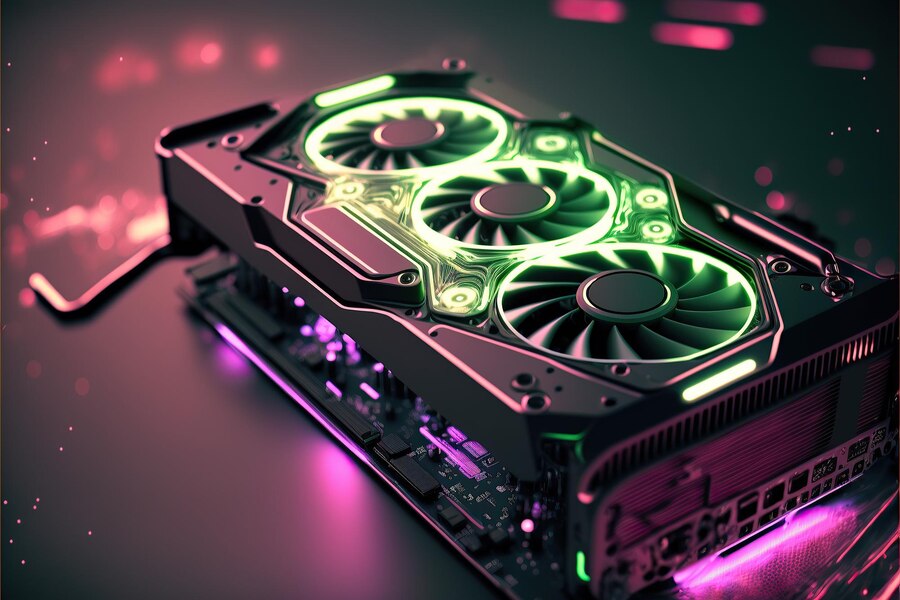
Why Your GPU Fans Might Not Need to Spin
In synopsis, the GPU’s impact on the gaming domain is significant, molding the visual quality, execution, and in general satisfaction in gaming encounters. As innovation propels, GPUs keep on pushing the limits of what is conceivable in the realm of gaming.
Anecdotes from the Field
Real-world exemplars resonate louder than mere rhetoric. Case studies from entities or individuals reaping tangible benefits from fine-tuned GPU fan rotation furnish concrete proof of the positive outcomes achievable in terms of energy conservation and performance enhancements.
Environmental Considerations
Beyond individual gains, the ecological impact of energy-efficient GPU fan rotation looms large. Curtailing energy consumption directly contributes to a diminished carbon footprint, fostering a more sustainable approach to technology usage and disposal.
The manufacturing process, energy efficiency, electronic waste, and sustainable practices are the primary environmental considerations associated with GPUs (Graphics Processing Units). Here is a breakdown of these contemplations:
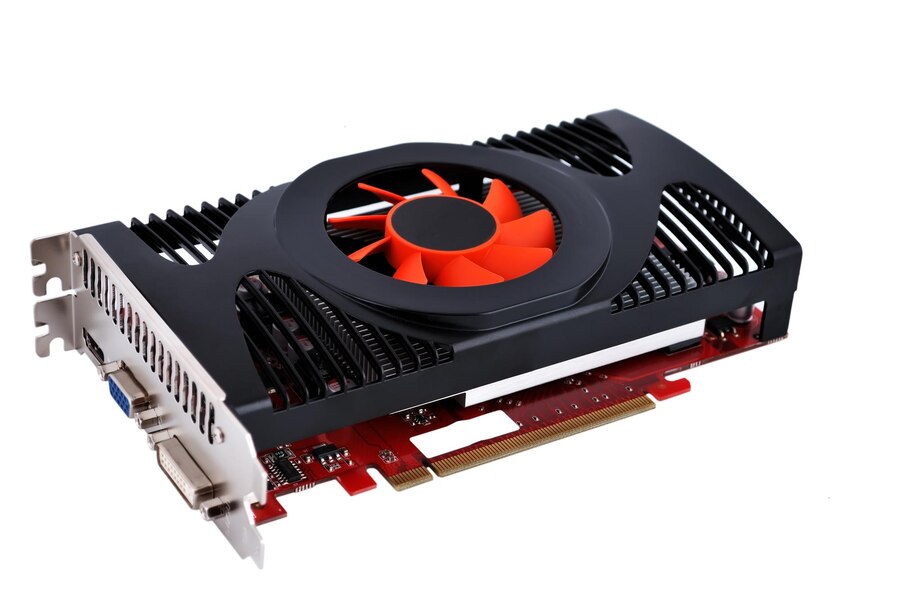
Why Your GPU Fans Might Not Need to Spin
Fabricating Cycles:
- The creation of GPUs includes different materials and assembling processes. Earth cognizant GPU makers endeavor to limit the natural effect of creation by taking on supportable works on, decreasing waste, and utilizing eco-accommodating materials.
Energy Productivity:
- Energy proficiency is a critical part of GPU plan. Energy-proficient GPUs consume less power while giving ideal execution, adding to decreased power utilization and lower fossil fuel byproducts. Numerous cutting edge GPUs consolidate power the board highlights, for example, dynamic recurrence scaling, to streamline energy use.
Sustainable power Utilization:
- GPU makers and server farms that convey GPUs for assignments like simulated intelligence preparing can add to natural supportability by embracing environmentally friendly power sources. Utilizing clean energy helps offset the carbon impression related with the power utilization of GPUs.
Electronic Waste (E-squander) The board:
- GPUs, as other electronic parts, add to the issue of electronic waste. To lessen the impact that e-waste has on the environment, programs for recycling and responsible disposal are absolutely necessary. Producers might execute reclaim projects to reuse GPUs toward the finish of their life cycle.
Strength and Life span:
- Planning GPUs for sturdiness and life span adds to ecological supportability by lessening the recurrence of substitutions and updates. Quality parts and development can expand the life expectancy of GPUs, diminishing the by and large natural effect related with assembling and removal.
Recyclability:
- In GPU design, recycling is an important consideration. To make recycling easier, manufacturers might use recyclable materials and design GPUs that can be disassembled. This decreases the ecological effect of GPU removal.
Asset Proficiency:
- During the manufacturing process, one of the most important environmental considerations is how well resources are used. Makers expect to limit asset utilization, squander age, and natural contamination related with the extraction and handling of unrefined components.
Reasonable Bundling:
- GPU makers can embrace manageable bundling rehearses, like utilizing reused materials or limiting overabundance bundling. Harmless to the ecosystem bundling adds to lessening the biological impression of the general item.
Eco-Accommodating Materials:
- Using eco-accommodating materials in GPU development, like without lead patch and other recyclable parts, is an earth mindful practice. This limits the ecological effect at each phase of the GPU life cycle.
Consistence with Natural Guidelines:
- GPU producers should comply with natural guidelines and norms set by specialists to guarantee capable assembling and removal rehearses. Consistence with these guidelines limits the ecological effect of GPU creation and use.
Straightforwardness and Detailing:
- Straightforwardness in conveying natural endeavors and it is urgent to cover ecological effects. GPU producers can give data on their manageability drives, carbon impression, and progress toward naturally capable practices.
By tending to these natural contemplations, GPU makers can add to a more maintainable and eco-accommodating tech industry, limiting the natural impression of designs handling units all through their life cycle.
Technological Strides
Stay abreast of the zeitgeist by delving into the latest strides in GPU fan architecture. From avant-garde materials to cutting-edge cooling solutions, we delve into the future of fan rotation and its pivotal role in shaping the forthcoming era of energy-efficient GPUs.
GPU (Designs Handling Unit) mechanical steps have been wonderful, driven by progressions in equipment, engineering, and programming. Here is an outline of the striking advancement and developments in GPU innovation:
Why Your GPU Fans Might Not Need to Spin

Building Advancement:
Equal Handling: GPUs have advanced from being particular processors for illustrations delivering to strong equal processors. They are essential for general-purpose computing tasks like AI and scientific simulations because they excel at handling multiple tasks simultaneously.
Bound together Shaders: Present day GPUs highlight bound together shader designs, empowering a more adaptable portion of handling power for various errands.
Process for Making Nanometers:
Contracting producing processes (e.g., 7nm, 5nm) consider more semiconductors to be stuffed into a more modest space, upgrading execution, energy effectiveness, and intensity the board.
Technology for Tracing Rays:
Ray Tracing in Real Time: Graphics rendering has been completely transformed by the introduction of real-time ray tracing. In games and simulations, this technology creates lighting, reflections, and shadows that are more realistic because it mimics the behavior of light.
The Acceleration of AI and Tensor Cores:
Tensor centers, present in some GPUs, speed up man-made intelligence and AI responsibilities. This is especially important for assignments like profound learning, brain network preparing, and computer based intelligence upgraded designs delivering.
High Data transfer capacity Memory (HBM):
- HBM, highlighted in a few GPUs, offers higher memory data transfer capacity and further developed energy productivity contrasted with customary GDDR memory, adding to generally execution gains.
GDDR6 and GDDR6X Memory:
- Progressions in designs memory innovation, like GDDR6 and GDDR6X, give expanded information move rates, permitting GPUs to deal with bigger datasets and support higher goals.
DLSS (Profound Learning Super Examining):
- DLSS is an element that utilizes man-made intelligence and AI to upscale lower-goal pictures progressively, giving superior picture quality and execution in upheld games.
Equipment Beam Following Help:
- Equipment support for beam following in GPUs has become norm, permitting designers to execute progressed lighting and enhanced visualizations in their games and applications.
Expanded Register Execution:
- GPUs keep on conveying expanded register execution, making them fundamental for requesting applications, for example, logical reenactments, information handling, and content creation.
Simulated intelligence Based Antialiasing:
- Computer based intelligence driven antialiasing strategies, similar to NVIDIA’s DLSS, use AI to upgrade picture quality by lessening associating curios while keeping up with execution.
High level Cooling Arrangements:
- To manage higher power densities and maintain optimal temperatures, GPU manufacturers have introduced novel cooling solutions, such as advanced heat pipe designs, vapor chamber cooling, and liquid cooling.
Continuous Designs Delivering:
- GPUs are currently able to do continuous designs delivering for complex scenes, empowering a more vivid and exact gaming experience.
Integration of the Ecosystem:
- GPUs are progressively coordinated into more extensive innovation environments, working pair with computer chips, gas pedals, and concentrated processors to make strong registering frameworks.
Quantum Figuring Exploration:
- While still in the beginning phases, there is continuous examination into quantum processing GPUs. These look to use the standards of quantum mechanics for explicit computational undertakings.

Why Your GPU Fans Might Not Need to Spin
These mechanical steps in GPU improvement keep on forming the scene of illustrations and equal handling, driving headways in gaming, “GPU Fans Might Not Need to Spin” logical examination, computerized reasoning, and different fields. The quick speed of development recommends that GPUs will stay at the bleeding edge of processing innovation soon.
User Narratives
Real users generously share their encounters with fine-tuned GPU fan rotation. Delve into firsthand accounts of individuals who have witnessed the affirmative impact on energy efficiency and performance, providing invaluable insights for those contemplating analogous adjustments.
Challenges and Panaceas
The implementation of optimal GPU fan rotation may pose challenges. We address prevalent obstacles and proffer pragmatic solutions, ensuring users can surmount any impediments in their pursuit of energy-efficient computing.
DIY Fan Rotation Enhancement

Why Your GPU Fans Might Not Need to Spin
Arm yourself with the acumen to manually optimize GPU fan rotation. Our step-by-step guide escorts you through the process, underscoring safety precautions and optimal practices to attain the consummate equilibrium.
Epilogue
In summation, GPU fan rotation emerges not as a trivial facet but as a pivotal element in achieving energy efficiency and optimal performance. By comprehending and assimilating the insights disseminated in this discourse, users can embark on a voyage towards a more sustainable and high-performance computing odyssey.
- Smart Cooling Strategies: Unleashing the Power of Adaptive GPU Fans
- Why Your GPU Fans Need a Break
- Must GPU Fan Blades Whirl Unceasingly?
- Monitor Stand for Sim Racing 2023
FAQs of Why Your GPU Fans Might Not Need to Spin
- Can manually tweaking GPU fan settings invalidate the warranty?
- Are there inherent risks linked to accelerating GPU fan rotation speed?
- How frequently should one cleanse GPU fans for optimal performance?
- Do all GPUs reap equal benefits from fan rotation optimization?
- Are there software tools universally compatible with all GPU models for fan optimization?
- Does gpu fan always spin? | 2024 - December 27, 2023
- GPU Fan Rotation, Save Energy | The Truth About 2024 - December 25, 2023
- How to Increase GPU Fan Speed | Ultimate Guide! 2024 - December 19, 2023



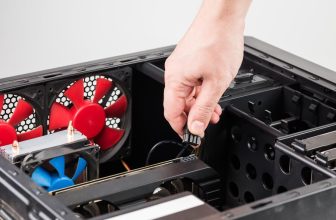
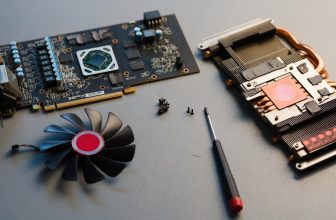
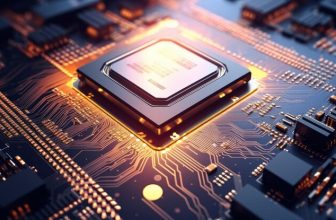
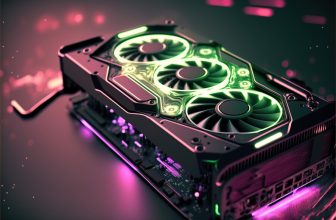

[…] Why Your GPU Fans Might Not Need to Spin Constantly […]
[…] Fan Development:On the off chance that the fan speed is accounted for as 0 RPM, it could demonstrate an issue with the fan or its association. This […]
[…] Energy Efficiency Benefits of Variable Fan Speed Variable fan speed improves energy efficiency. Fans work at higher velocities just while vital, moderating energy during times of lower GPU movement. […]
[…] Why Your GPU Fans Might Not Need to Spin Constantly […]
[…] GPU Fans Might Not Need to Spin Constantly | 2024 […]
[…] Difficulties: Inappropriate removal of electronic gadgets can prompt ecological contamination and well-being dangers. E-squander frequently contains dangerous materials that can drain into the […]
Awesome https://lc.cx/xjXBQT
Very good https://lc.cx/xjXBQT
Awesome https://lc.cx/xjXBQT
Very good https://rb.gy/4gq2o4
Very good https://is.gd/N1ikS2
Very good https://is.gd/N1ikS2
Very good https://is.gd/N1ikS2
Awesome https://is.gd/N1ikS2
Good https://is.gd/N1ikS2
Awesome https://is.gd/N1ikS2
Good https://is.gd/N1ikS2